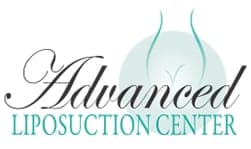Correcting Unevenly Shaped Breasts

Correcting asymmetrical or unevenly shaped breasts: surgical breast revision.
It’s normal for women to have breasts which aren’t exactly the same shape. In some cases, however, the difference is so large or glaring that this asymmetry is very noticable. These differences can be in shape, size, nipple placement, areola size, or any combination of the above. Correcting Unevenly Shaped Breasts is something at which Dr Giraldo excels.
Breast Revision Surgery
Many women in this situation elect to have breast revision surgery. This usually includes a combined approach of lifting the breasts, augmenting them via implants or fat transfer, breast reduction, and various methods of repositioning the areola or nipples. Note that this isn’t a simple surgery, and should only be performed by a cosmetic surgeon with plenty of breast revision experience.
Surgical correction of uneven breasts is generally regarded as a safe and relatively minor surgery. It is usually performed in an outpatient setting such as your surgeon’s office or a surgery center. Only local anesthesia is needed, which eliminates the risks associated with general anesthesia. This procedure is, however, still surgery. Make sure to bring someone with you to drive you home. It’s also a good idea to have someone stay with you during the first night after your procedure.
After Care of Correcting Unevenly Shaped Breasts
In many ways the success of your surgery to Correcting Unevenly Shaped Breasts lies in your hands. As with any surgery proper at-home care is essential during the healing process. Don’t leave the office without detailed instructions and follow them exactly as written. Healthy lifestyle choices, especially ceasing tobacco use while healing, also make an enormous difference. Recovering patients should also eat a healthy diet, drink plenty of water, and limit physical activity according to aftercare instructions.
Who can benefit from breast implant revision surgery?
In general, you may be a suitable candidate for breast implant revision if:
• You’re dissatisfied with your breast implants’ size, shape, or look.
• You’re worried about the health or integrity of your implants.
• You are physically fit and maintain a healthy weight.
• You’ve set realistic goals.
• You’re a nonsmoker, right?
• Spend some time looking at breast implant revision surgery photographs and learning about what to expect during recovery if you’re thinking about it. Patients can have more realistic expectations and have a faster recovery if they prepare ahead of time.
Are there any age or health restrictions for undergoing breast revision?
Age and health restrictions for breast revision surgery can vary depending on individual circumstances and the specific reasons for seeking the procedure. In general, there are no strict age limits for breast revision, but a person’s overall health and medical history play a crucial role in determining candidacy.
Health restrictions may apply if a person has underlying medical conditions that pose a risk during surgery or recovery. It’s essential to have a thorough consultation with a board-certified plastic surgeon who can assess your health, discuss your goals, and determine if you are a suitable candidate for breast revision based on your unique situation. They will consider factors such as your physical health, previous surgeries, and the specific issues you want to address. Your surgeon will provide guidance on the best course of action and potential restrictions, if any, based on their evaluation.
Will breast revision surgery leave noticeable scars?
Breast revision surgery, like any surgical procedure, can result in scars, but the extent and visibility of scars can vary based on several factors:
- Incision Location: The location of incisions made during breast revision surgery can impact the visibility of scars. Surgeons often use existing incision sites from previous breast surgeries to minimize additional scarring.
- Surgical Technique: The surgeon’s skill and technique play a role in scar appearance. Some surgeons are highly skilled at minimizing scarring.
- Individual Healing: How an individual’s body heals and forms scars can vary. Some people may develop more noticeable scars than others.
- Scar Care: Proper post-operative scar care, including keeping the incisions clean and following your surgeon’s instructions, can help minimize scar visibility.
- Time: Scars typically fade and become less noticeable over time, often taking several months to a year or more to reach their final appearance.
Are There Any Risks Of Breast Revision?
The decision to have breast implant revision surgery is a highly individual one. You must choose whether the advantages will meet your objectives and whether the risks and potential consequences of breast implant revision are acceptable.
The following are some of the potential dangers of breast implant revision surgery:
• The dangers of anesthesia
• Asymmetry
• Anaplastic large cell lymphoma linked to breast implants
• Bleeding
• Cardiovascular and pulmonary problems, as well as deep vein thrombosis
• Deep under the skin, fatty tissue may perish (fat necrosis)
• a buildup of fluid (seroma)
• Hematoma
• Infection
• Numbness or other sensational changes in the skin
• Persistent discomfort
• Incisions do not heal properly.
• Skin Looseness on a Regular Basis Skin Loss
• Discoloration of the skin and/or persistent edoema
• Aesthetic effect that is not up to par
• Scarring that isn’t good
These and other dangers will be thoroughly disclosed before you give your consent. It’s critical that you ask your plastic surgeon all of your questions directly.
As with any surgery the potential benefits must outweigh the risks involved. While the risks associated with breast revision surgery very small they should still be considered before making a final decision.
